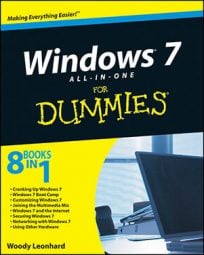Most netbooks can be upgraded to Windows 7 Home Premium Edition. To determine whether your netbook can handle Windows 7 Home Premium, you first need to evaluate your system hardware capabilities, then check the best upgrade path depending on your preexisting operating system.
In order to upgrade to Windows 7 Home Premium, your netbook needs at least 1GB of memory (RAM), at least 40 GB of disk space, and a 1 GHz or better processor. If you left on some of the stickers that were affixed to your netbook, this information should be easy to find. IF not, look online for your model specs.
The next step is to look at your existing software. New netbooks usually have Windows 7 Starter edition preinstalled, but older netbooks will be running Linux or Windows XP Home Basic (or both). The upgrade procedure will vary depending on your current software.
If you're upgrading from Windows 7 Starter edition, you can use the Windows Anytime Upgrade (WAU) application. Just open the Start menu, type Anytime, and click the WAU link in the list. In the Windows Anytime Upgrade window, follow the links to go online and purchase the upgrade. Once you enter your new product key in to the WAU window, you’re done. All the features of Windows 7 Home Premium are yours.
If you're upgrading from Windows XP, you’re in for a treat. Before you can load Home Premium, you need to reformat your hard drive. The Windows Home Premium DVD will guide you through the process. Just be sure to backup all your files or they'll be gone for good.
If you have Linux installed, search the Internet to see whether your particular flavor of Linux can peacefully coexist with Windows 7. In many cases, you can use the GRUB menu to set up a dual boot. With this multiboot format, you get to decide which operating system you want to use each time you turn on your computer.
Although most netbooks are capable of upgrading to Windows 7 Home Premium, don’t expect to see the fancy Glass interface. There just isn’t enough power for that. And, Windows 7 isn’t going to be anywhere nearly as snappy as Linux, but it'll act like Windows, and aside from the graphics, it contains all the same features.

